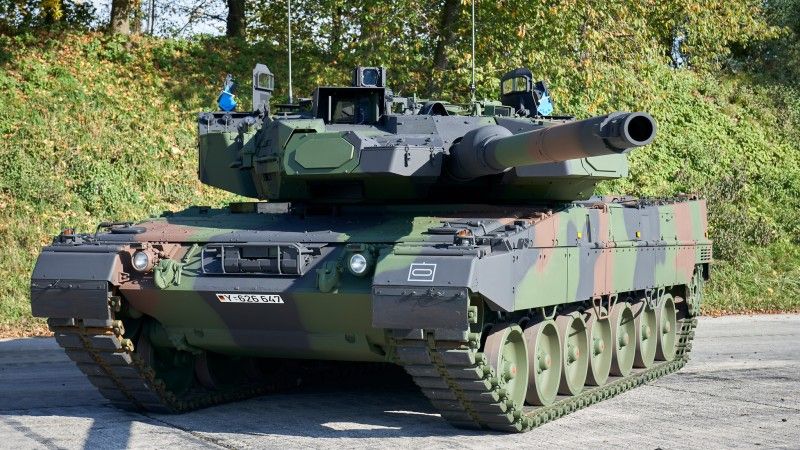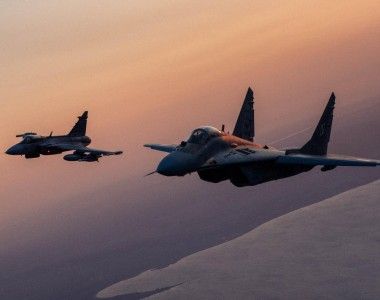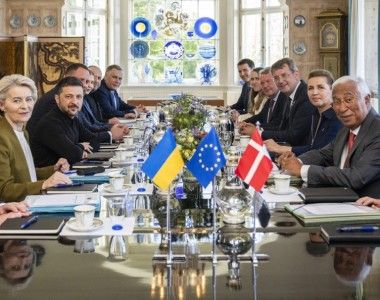NATO Summit in Hague: What will Poland and the Alliance gain?

Photo. Bundeswehr/Volker Muth
At the NATO summit in The Hague, groundbreaking decisions were made to increase defense spending, which could pave the way for the North Atlantic Alliance to significantly increase its combat capabilities. However, these will be achieved at different rates in different countries. What will the decisions made at the Hague summit actually bring?
This year’s NATO summit declaration is short but specific. The allies« commitment to collective defense under Article 5 was reaffirmed, Russia was identified as a long-term threat, and the allies pledged to spend 5% of GDP on security, including 3.5% of GDP on defense. This will involve presenting plans to achieve these targets on a year-on-year basis, as well as meeting updated guidelines on specific capabilities (known as Capability Targets). A broader review of spending plans will be carried out in 2029.
What does this mean in practice? Defense spending is the foundation that allows the investments necessary to meet capability goals to be made in the first place. This is how Gen. Dariusz Łukowski, head of the National Security Bureau, spoke about this issue in an interview with Defence24.pl before the NATO summit. „Real capabilities must fulfill what was previously designed under regional planning. We want to focus on capabilities that will strengthen Alliance deterrence, by showing that we have forces, an effective command chain, everything integrated and ready to act. (…) A higher level of defence spending, which will be mentioned in the declaration from The Hague summit, is necessary in order to, as I mentioned earlier, fulfill plans with real, effective capabilities.” said Gen. Łukowski.
According to Breaking Defense, US Lieutenant General Alexus Grynkiewich, the future strategic commander of US and NATO forces in Europe, said during a hearing before the US Senate Armed Services Committee that he would seek to develop plans so that the purchases of individual allied countries complement each other while also ensuring interoperability. He also mentioned that some countries are strong in the land domain, while others are strong in the maritime and other domains, and that it would be good for their capabilities to build a mutually complementary system.
However, it is worth noting that different countries will achieve NATO’s target level of defense spending at different rates. Based on public statements by individual governments, Alliance countries can be divided into several groups in terms of defense spending:
- The first group includes countries on NATO's eastern flank, such as Poland and the Baltic states, as well as Denmark, Sweden, Germany (and probably Norway and Finland, where spending will soon exceed or has already exceeded 3.3% of GDP). These countries either already spend at least 3.5% of GDP on defense or will soon – by 2030 – reach this level or a similar one (e.g., Finland had already planned to spend 3.3% of GDP in 2029, and Norway is spending 3.3% this year). These countries have room to quickly build up their capabilities, with many caveats, of course. In Poland's case, the budget is burdened by purchases to supplement donations to Ukraine and structural problems, such as the use of unmanned systems, while the Baltic states have relatively low population and economic potential. The Nordic countries have developed defense industries and fairly modern armed forces, but they do not have the capacity to project large land forces outside their territory, which means that other allies must place appropriate emphasis in their own planning. Germany, which has a strong defense industry, intends to increase its budget from the current €95 billion (about 2.4% of GDP) to as much as €161 billion in 2029, but is struggling with problems related to army recruitment and public acceptance of the military. Nevertheless, the measures implemented by these countries offer the opportunity to significantly strengthen their capabilities in a relatively short period of time. On the one hand, it will be important to implement NATO priorities such as air defense, and on the other, to build capabilities to use and defend against unmanned systems. Paradoxically, however, wealthy and industrialized countries such as Germany, if they overcome legal and mental barriers, can build these capabilities quickly. We will return to this issue on Defence24.pl. It should also be added that the 3.5% of GDP includes spending on aid to Ukraine, with the Nordic countries (and Germany) allocating billions of euros to this purpose.
- The second group consists of countries that have declared their intention to achieve NATO's goal in accordance with the adopted assumptions, i.e. by 2035. Representatives of the highest authorities of Italy, the United Kingdom, and Canada, as well as other allies, formally confirmed their commitments in this regard at the summit. It is worth mentioning that the three countries mentioned above have, on the one hand, significant problems with their public finances (nominal debt ratios higher than those of Poland or Germany, for example) and, on the other hand, strong defense industries. Therefore, the implementation of a long-term plan to increase spending may allow them to offset the economic effects through investments in their own industries, although the short-term effects will be limited (see the British plan to purchase "at least 12 F-35A fighter jets," which is a very small number of these aircraft, at least in the initial stage). Nevertheless, even such a plan offers the prospect of acquiring capabilities and expanding them over time, as Russia rebuilds its capabilities. Unless, of course, there is a direct threat to NATO countries and a significant reduction in US involvement forced by war in the Pacific. However, it is important that NATO countries, including the US, have accepted this timetable, so US involvement – at least during the capability-building phase – may also be maintained in the form of a military presence.
- The third group consists of countries that are more or less openly critical of NATO's goal. Spain is, of course, leading the way here, with Prime Minister Pedro Sanchez distancing himself from the goal of spending 3.5% of GDP on defense. This means that the process of building capabilities will be much slower and less extensive. Slovak Prime Minister Robert Fico had also previously criticized NATO's target, but Spain remains the only country to have officially and so strongly distanced itself from NATO's target, as reflected in the Spanish prime minister's reception at the NATO summit.
Looking at the conclusions of the NATO summit, one can safely speak of a multi-speed Alliance – not in terms of Article 5, but in terms of the speed of achieving the planned level of defense spending. From the point of view of Poland and countries bordering Russia, it is important that the countries that have declared their presence in the „first” and „second” groups fulfill their commitments, and that Spain remains alone in the third group. Critics of the Hague summit declaration point out that money alone does not fight, and that funds must be spent wisely.
This is true, and the development of the battlefield must also be taken into account, but without financial commitment, it is impossible to fight. Paradoxically, this is confirmed by Ukraine itself, which says that despite tens of billions of euros and dollars spent on aid each year, there are still untapped reserves both in Ukraine’s own industry and in that of its partners. One of the reasons why Kyiv did not receive adequate supplies of conventional weapons for 2023-2024 was the fact that they were simply not available in the stocks of Ukraine’s allies (especially European ones) after decades of budget cuts. To illustrate this, let us add that the average share of defense spending in GDP for European countries in the 1980s was over 3 percent. This was the case, among others, for Germany, which at that time reached the peak of the Bundeswehr’s capabilities, which was then the foundation of NATO’s conventional defense in the Western European theater in the land domain, as well as in many areas of air defense and aviation.
The conclusions of the Hague summit therefore provide a very solid basis for expanding the defense capabilities of European countries so that they can, within NATO and in cooperation with the United States, build up deterrence and defense capabilities to counter Russian aggression. Only this solution offers the possibility of effective deterrence and defense – action within NATO, but with much greater responsibility and a greater role for European countries. Now, however, we must ensure that the agreements are fully implemented, both in terms of defense spending and the specific capabilities to be developed with this money.



